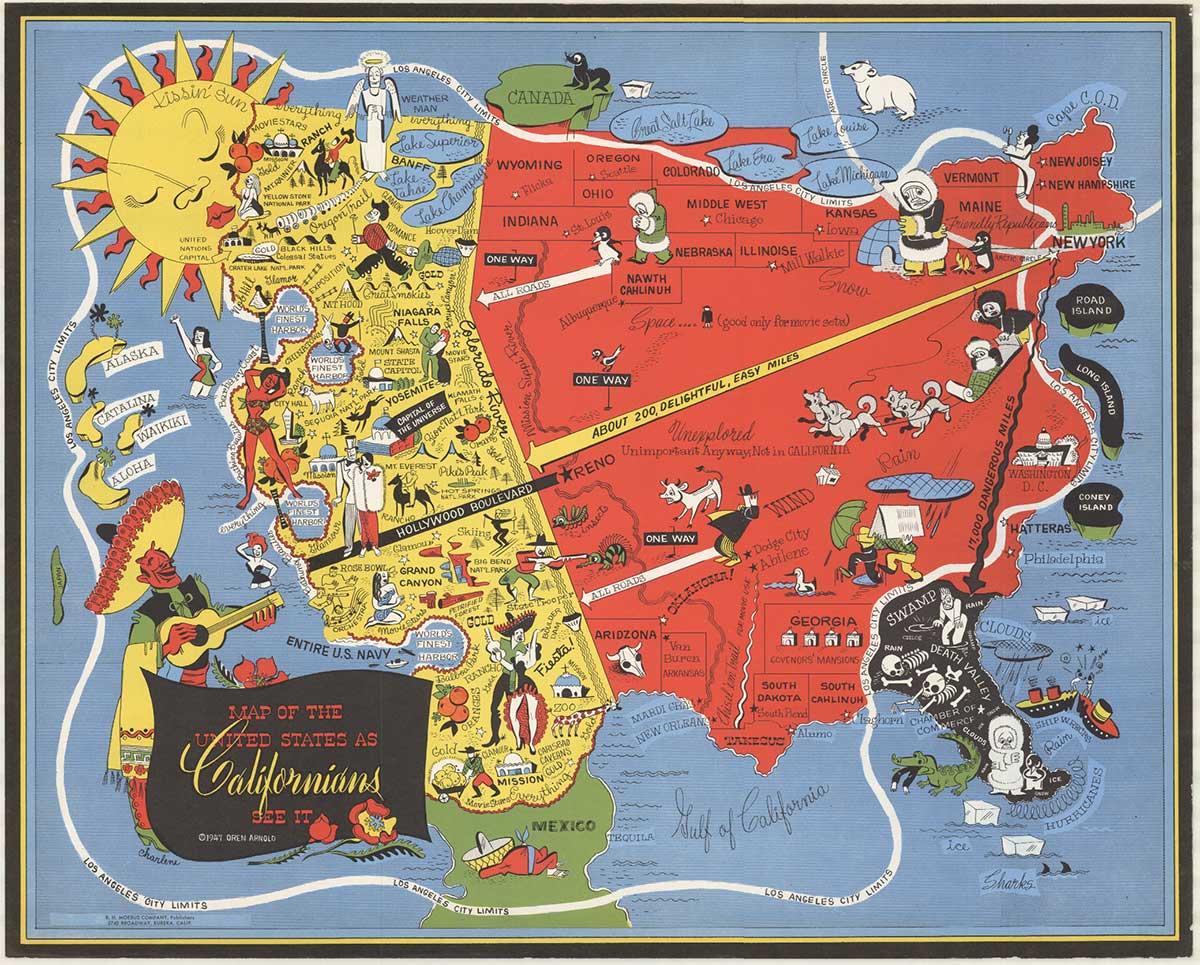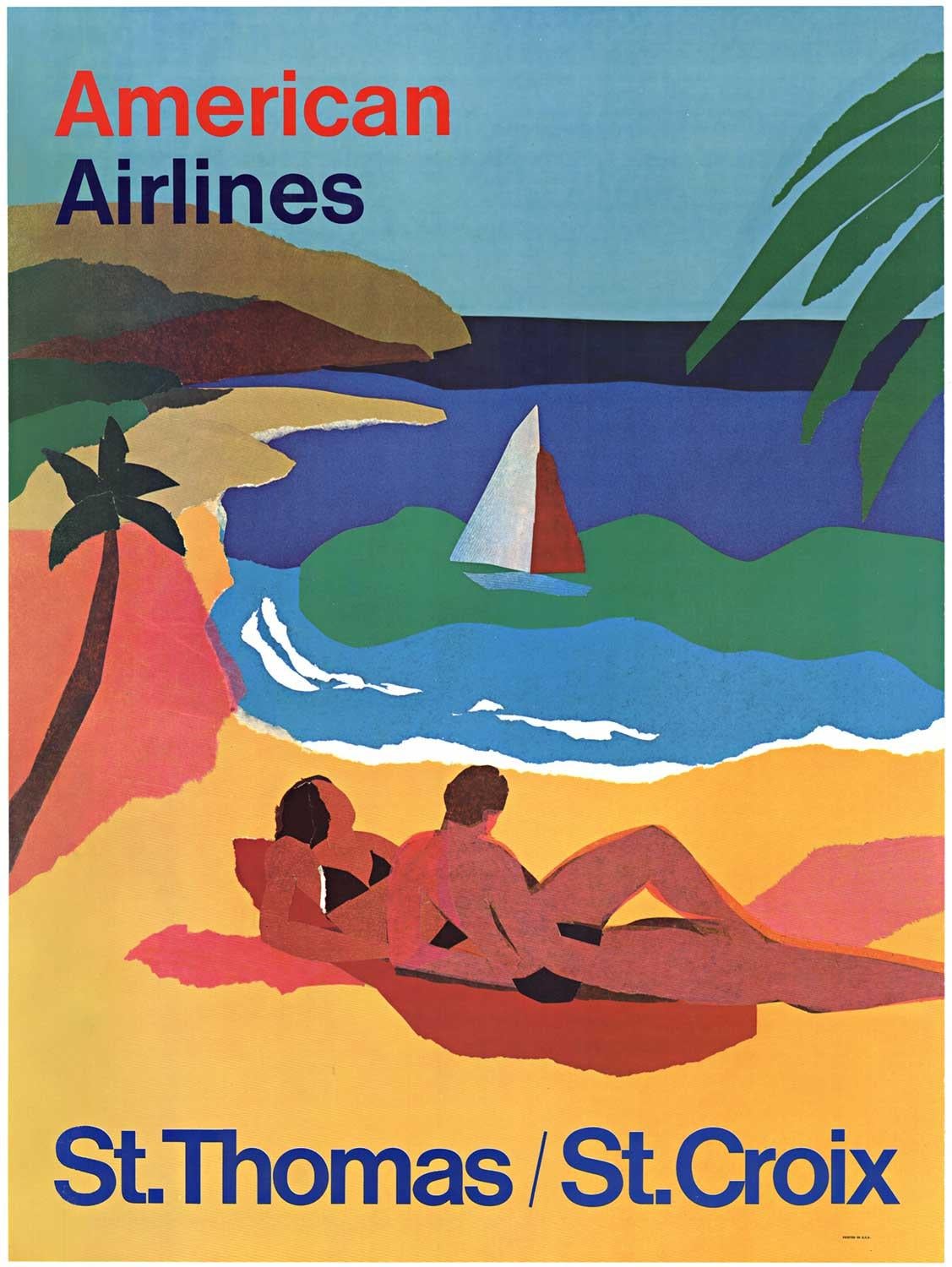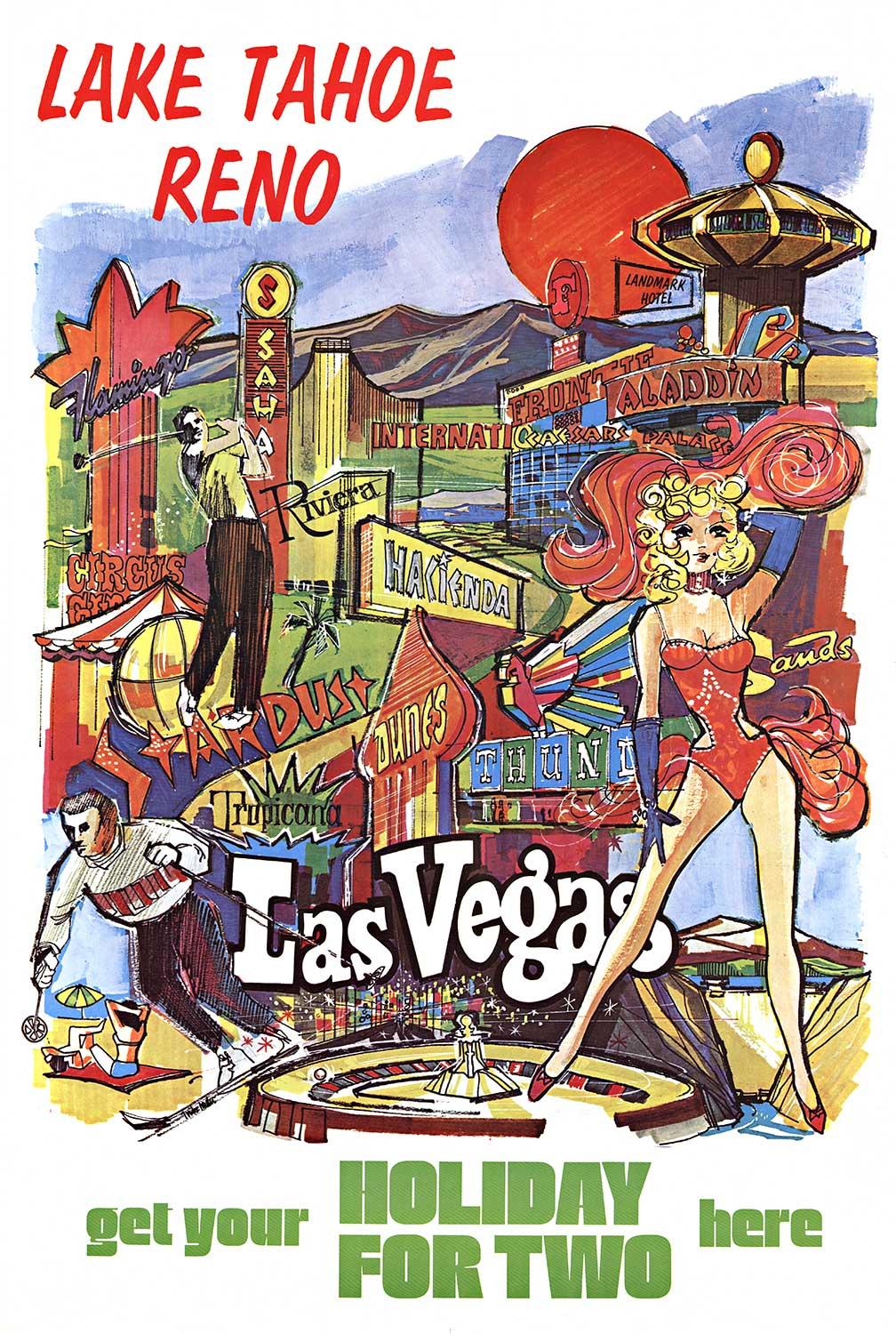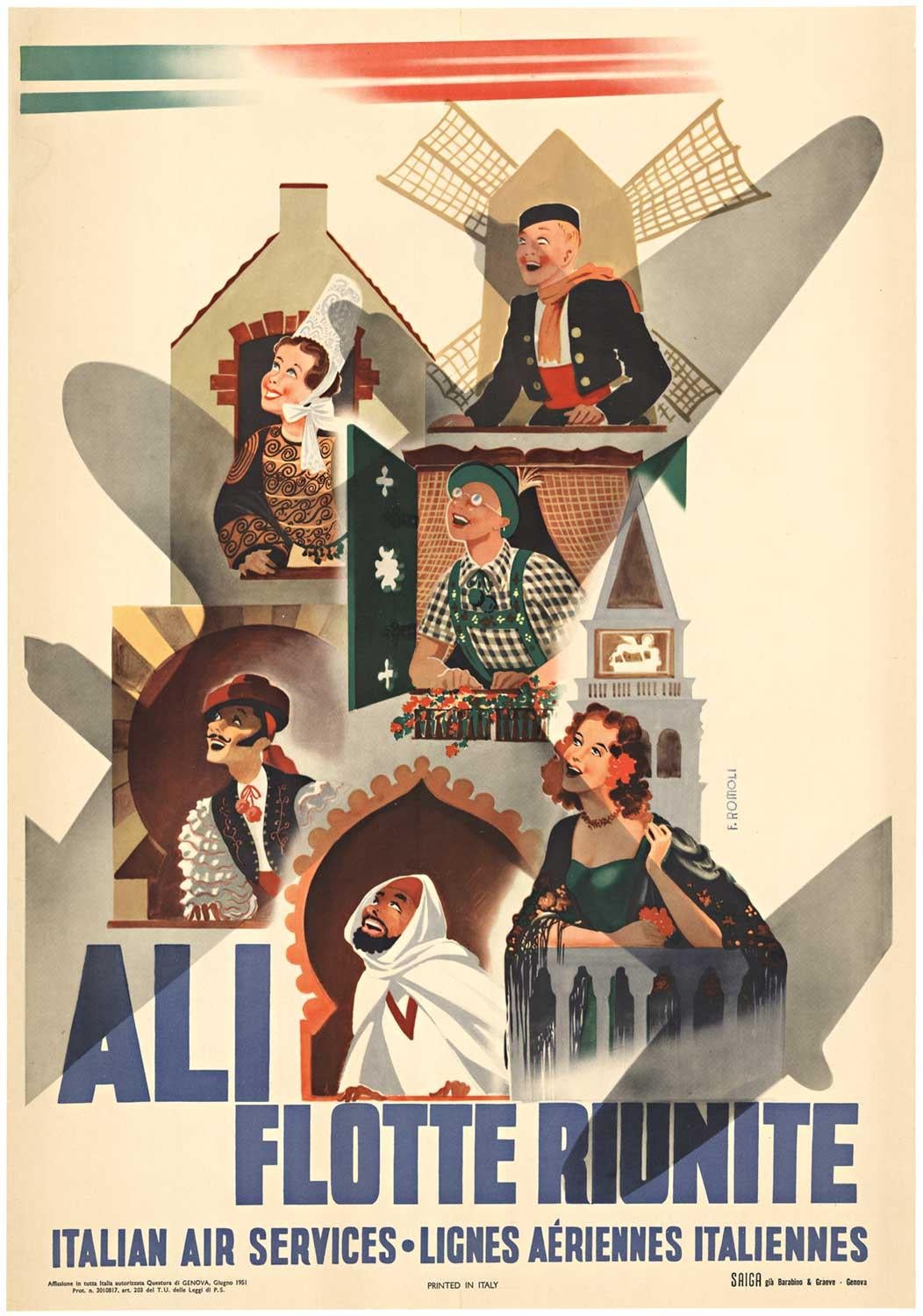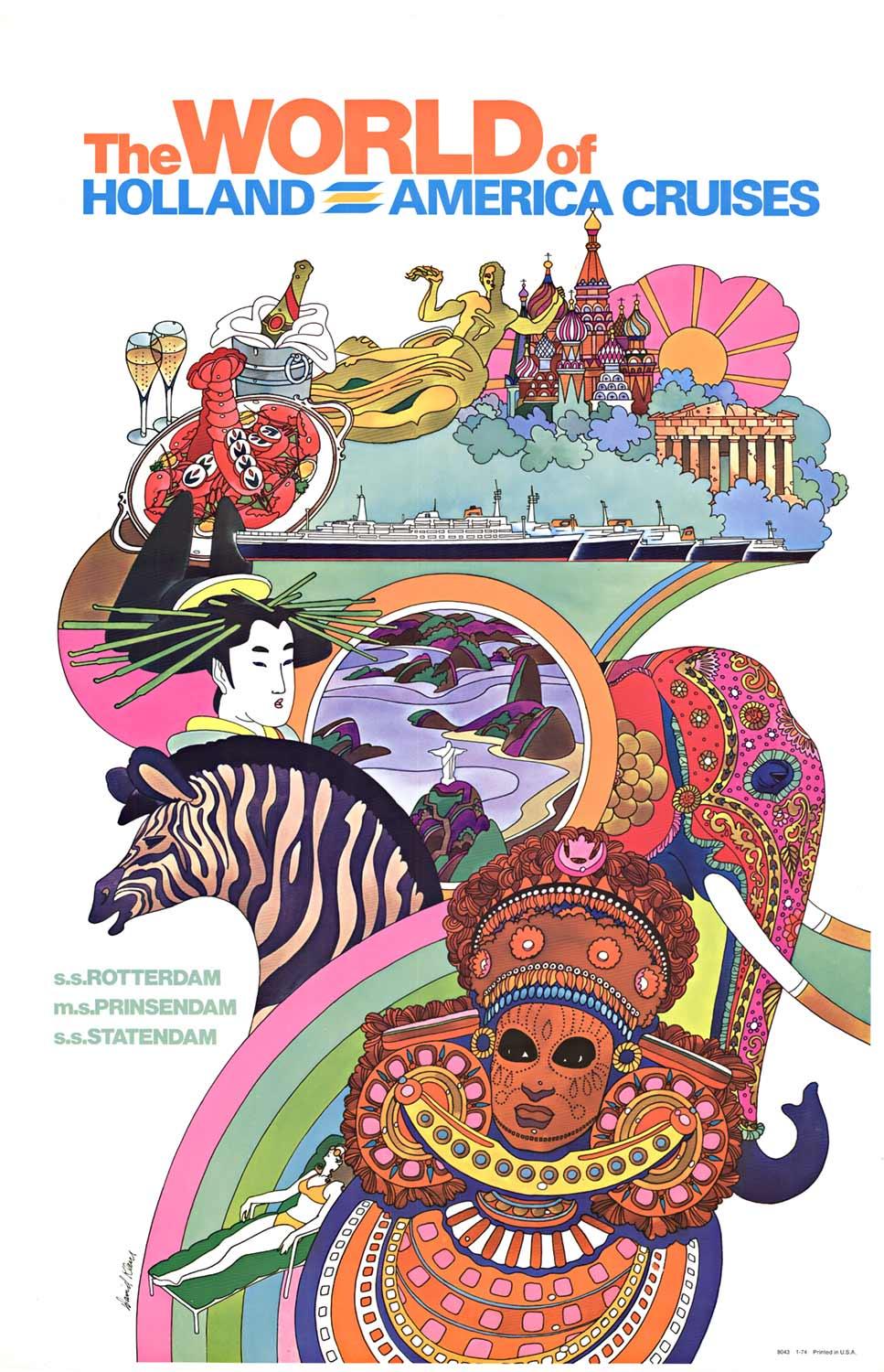Items Similar to Original Palm Springs and The Communities of The Coachella Valley vintage poster
Want more images or videos?
Request additional images or videos from the seller
1 of 8
E. SmithOriginal Palm Springs and The Communities of The Coachella Valley vintage poster1970s
1970s
About the Item
Original Palm Springs, California, and the communities of the Coachella Valley vintage poster. A fun image map of the Palm Springs area and activities and hotspots to visit.
Linen backed in very fine condition, ready to frame.
The artist is E. Smith and the signature is below the sundial in the bottom right.
This poster could have been in cooperation with American Airlines which is shown in the upper left area. Examine the image and see how many locations you already know or places you have visited. If you haven’t visited, it will give you an idea of what to expect. A definite must for any Palm Springs visitor or resident.
This is an Original Lithograph Vintage Poster; it is not a reproduction.
Reduced USA shipping costs by gallery.
- Creator:E. Smith
- Creation Year:1970s
- Dimensions:Height: 41 in (104.14 cm)Width: 29 in (73.66 cm)Depth: 0.05 in (1.27 mm)
- Medium:
- Movement & Style:
- Period:
- Condition:linen backed in fine condition.
- Gallery Location:Spokane, WA
- Reference Number:
About the Seller
5.0
Platinum Seller
These expertly vetted sellers are 1stDibs' most experienced sellers and are rated highest by our customers.
Established in 1998
1stDibs seller since 2020
162 sales on 1stDibs
Typical response time: 2 hours
- ShippingRetrieving quote...Ships From: Spokane, WA
- Return PolicyA return for this item may be initiated within 3 days of delivery.
More From This SellerView All
- Original 'Map of the United States as Californians See It' vintage map posterLocated in Spokane, WAOriginal vintage poster: "Map of the United States as Californians See It". 1947, artist: Oren Arnold. Size: 16.5" x 20.5", R. H. MOEBUS COMPANY This poster is not linen-backed. This poster is in very good fine condition, ready to frame. A humorous satirical pictorial map from 1947 with the golden sun on the upper left, gives a detailed depiction of California, its relative size to the rest of the United States, showing Florida as "Death Valley", the rest of the United States as "Unexplored" 'Unimportant anyway, not in California". The image has your Mexican singer; bikini-clad bathers and others set in the image. Shows rivers, lakes, harbors, landmarks, parks, recreational activities, and local people. This map shows Los Angeles’ city...Category
1940s American Modern Landscape Prints
MaterialsOffset
- Original American Airlines, St. Thomas / St. Croix vintage travel posterLocated in Spokane, WAOriginal American Airlines St. Thomas / St. Croix vintage trave poster. Archival linen backed in very good condition, ready to frame. Later edition o...Category
Late 20th Century American Modern Landscape Prints
MaterialsOffset
- Original Lake Tahoe Reno Las Vegas Holiday for Two vintage posterLocated in Spokane, WAOriginal LAKE TAHOE, RENO, LAS VEGAS - Get your HOLIDAY FOR TWO here vintage travel poster. Archival linen backed in very fine condition, ready to frame. This is a fun vintage travel poster from c. 1970’s that highlights the fun and interesting places and attractions to see and visit in Nevada. Many of the casinos shown in the poster have been replaced with newer and larger venues. A great game...Category
Late 20th Century American Modern Landscape Prints
MaterialsOffset
- Original "Ali Flotte Riunite, Italian Air Services" vintage airlines poster.Located in Spokane, WAOriginal Italian Air Service Lines Aeriennes Italiennes Original travel poster; linen backed. Printed in Italy. Printed: 1951. Artist: F. Romoli. Ali Airlines Operated from ...Category
1950s American Modern Figurative Prints
MaterialsOffset
- Original "The World Holland American Cruises" original vintage travel posterBy David KleinLocated in Spokane, WAOriginal poster: THE WORLD OF HOLLAND AMERICAN CRUISES. Artistic: David Klein. Rare original unbacked vintage original David Klein poster printed on heavier paper stock with a glossy UV protective finish. What's not to love about this poster? Here are a few things going on in this original cruise line poster. Some champagne with lobster, Rockefeller Center statue, Mosco, Athena Parthenon, a Japanese woman in a kimono, Christ on the hill in Brazil, the large head of an elephant in India, a zebra, African headdress...Category
1970s American Modern Figurative Prints
MaterialsOffset
- Original "July 4th in Old New York" Bicentennial vintage poster 1976Located in Spokane, WAOriginal 1976 July 4th in Old New York vintage Bicentennial festival vintage poster. The poster is copyrighted by Macy’s New York. Artists were: Griesbach and Martucci. Arc...Category
1970s American Modern Landscape Prints
MaterialsOffset
You May Also Like
- Waiting, Framed Print by Will BarnetBy Will BarnetLocated in Long Island City, NYWaiting from the Kent Bicentennial Portfolio Will Barnet, American (1911–2012) Date: 1975 Offset Lithograph (unsigned as issued) Image Size: 11.25 x 11 inches Size: 17 x 14 in. (43.1...Category
1970s American Modern Figurative Prints
MaterialsOffset
- Simka Simkhovitch WPA Artist Lithograph Island Beach 1933 American ModernistBy Simka SimkhovitchLocated in Surfside, FLSimka Simkhovitch (Russian/American 1893 - 1949) signed lithograph. Pencil signed and dated "S. Simkhovitch 1933" lower center. Title "Island Beach," in pencil lower left of sheet. Numbered "44/50" in pencil lower right. (it is either Island Beach Wisconsin or New Jersey) Simka Simkhovitch (Симха Файбусович Симхович) (aka Simka Faibusovich Simkhovich) (Novozybkov, Russia May 21, 1885 O.S./June 2, 1885 N.S.—Greenwich, Connecticut February 25, 1949) was a Ukrainian-Russian Jewish artist and immigrant to the United States. He painted theater scenery in his early career and then had several showings in galleries in New York City. Winning Works Progress Administration (WPA) commissions in the 1930s, he completed murals for the post offices in Jackson, Mississippi and Beaufort, North Carolina. His works are in the permanent collections of the Dallas Museum of Art, the National Museum of American Art and the Whitney Museum of American Art. Born outside Kyiv (Petrograd Ukraine) into a Jewish family who owned a small department store. During a severe case of measles when he was seven, Simcha Simchovitch sketched the views outside his window and decided to become an artist, over his father's objections. Beginning in 1905, he studied at the Grekov Odessa Art School and upon completion of his studies in 1911 received a recommendation to be admitted to the Imperial Academy of Arts. Though he enrolled to begin classes in architecture, painting, and sculpture at the Imperial Academy, he was dropped from the school roster in December because of the quota on the number of Jewish students and drafted into the army. Simchovitch served as a private in the 175th Infantry Regiment Baturyn [ru] until his demobilization in 1912. Re-enrolling in the Imperial Academy, he audited classes. Simka Simkhovitch exhibited paintings and sculptures in 1918 as part of an exhibition of Jewish artists and in 1919 placed 1st in the competition "The Great Russian Revolution" with a painting called "Russian Revolution" which was hung in the State Museum of Revolution. In 1922, Simkha Simkhovitch exhibited at the International Book Fair in Florence (Italian: Fiera Internazionale del Libro di Firenze). In 1924, Simkhovitch came to the United States to make illustrations for Soviet textbooks and decided to immigrate instead. Initially he supported himself by doing commercial art and a few portrait commissions. In 1927, he was hired to paint a screen for a scene in the play "The Command to Love" by Fritz Gottwald and Rudolph Lothar which was playing at the Longacre Theatre on Broadway. Art dealers began clamoring for the screen and Simkhovitch began a career as a screen painter for the theater. Catching the attention of the screenwriter, Ernest Pascal, he worked as an illustrator for Pascal, who then introduced him to gallery owner, Marie Sterner. Simkhovitch's works appeared at the Marie Sterner Gallery beginning with a 1927 exhibit and were repeated the following year. Simkhovitch had an exhibit in 1929 at Sterner's on circus paintings. In 1931, he held a showing of works at the Helen Hackett Gallery, in New York City and later that same year he was one of the featured artists of a special exhibit in San Francisco at the California Palace of the Legion of Honor in Lincoln Park. The exhibit was coordinated by Marie Sterner and included four watercolors, including one titled "Nudes". He is of the generation of Russian Soviet artists such as Isaac Pailes, Serge Charchoune, Marc Chagall, Chana Orloff, Isaac Ilyich Levitan, and Ossip Zadkine. In 1936, Simkhovitch was selected to complete the mural for the WPA Post office project in Jackson, Mississippi. The mural was hung in the post office and courthouse in 1938 depicted a plantation theme. Painted on the wall behind the judge’s bench, “Pursuits of Life in Mississippi”, a depiction of black workers engaged in manual labor amid scenes of white professionals and socialites, was eventually covered over in later years during renovations due to its stereotypical African American imagery. The following year, his painting "Holiday" won praise at an exhibition in Lincoln, Nebraska. In 1940, Simkhovitch's second WPA post office project was completed when four murals, "The Cape Lookout Lighthouse and the Orville W. Mail Boat", "The Wreck of the Crissie Wright", "Sand Ponies" and "Canada Geese" were installed in Beaufort, North Carolina. The works were commissioned in 1938 and did not generate the controversy that the Jackson mural had. The main mural is "The Wreck of the Crissie Wright" and depicts a shipwreck which had occurred in Beaufort in 1866. "The Cape Lookout Lighthouse and the Orville W. Mail Boat" depicted the lighthouse built in 1859 and the mail boat that was running mail during the time which Simkhovitch was there. The boat ran mail for the area until 1957. "Sand Ponies" shows the wild horses common to the North Carolina barrier islands and "Canada Geese" showed the importance of hunting and fishing in the area. All four murals were restored in the 1990s by Elisabeth Speight, daughter of two other WPA muralists, Francis Speight...Category
1930s American Modern Landscape Prints
MaterialsLithograph
- 'Financial District', New York City — 1930s American ModernismBy Howard Norton CookLocated in Myrtle Beach, SCHoward Cook, 'Financial District', lithograph, 1931, edition 75, Duffy 155. A fine, richly-inked impression, on cream wove paper, the full sheet with wide margins (2 3/4 to 5 5/8 inches), in excellent condition. Image size 13 5/16 x 10 3/8 inches (338 x 264 mm); sheet size 23 x 16 inches (584 x 406 mm). Matted to museum standards, unframed. Literature: 'American Master Prints from the Betty and Douglas Duffy Collection', the Trust for Museum Exhibitions, Washington, D.C., 1987. Collections: Crystal Bridges Museum of American Art, Library of Congress, Metropolitan Museum of Art, Philadelphia Museum of Art, Smithsonian American Art Museum. ABOUT THE ARTIST Howard Norton Cook (1901-1980) was one of the best-known of the second generation of artists who moved to Taos. A native of Massachusetts, he studied at the Art Students League in New York City and at the Woodstock Art Colony. Beginning his association with Taos in 1926, he became a resident of the community in the 1930s. During his career, he received two Guggenheim Fellowships and was elected an Academician in the National Academy of Design. He earned a national reputation as a painter, muralist, and printmaker. Cook’s work in the print mediums received acclaim early in his career with one-person exhibitions at the Denver Art Museum (1927) and the Museum of New Mexico (1928). He received numerous honors and awards over the years, including selection in best-of-the-year exhibitions sponsored by the American Institute of Graphics Arts, the Brooklyn Museum, the Society of American Etchers, and the Philadelphia Print Club. His first Guggenheim Fellowship took him to Taxco, Mexico in 1932 and 1933; his second in the following year enabled him to travel through the American South and Southwest. Cook painted murals for the Public Works of Art Project in 1933 and the Treasury Departments Art Program in 1935. The latter project, completed in Pittsburgh, received a Gold Medal from the Architectural League of New York. One of his most acclaimed commissions was a mural in the San Antonio Post Office in 1937. He and Barbara Latham settled in Talpa, south of Taos, in 1938 and remained there for over three decades. Cook volunteered in World War II as an Artist War Correspondent for the US Navy, where he was deployed in the Pacific. In 1943 he was appointed Leader of a War Art Unit...Category
1930s American Modern Figurative Prints
MaterialsLithograph
- "The Caissons Go Rolling Along".By Kerr EbyLocated in Storrs, CT"The Caissons Go Rolling Along". 1929. Etching and sandpaper ground. Giardina 145. 17 3/8 x 9 1/2 (sheet 18 3/4 x 11 1/2). Edition 90. Slight mat line, otherwise find condition. A ri...Category
1920s American Modern Landscape Prints
MaterialsDrypoint, Etching
- Mine Near Continental Divide, Black White Colorado Mountain Landscape WinterBy Arnold RönnebeckLocated in Denver, COLithograph on paper titled 'Mine Near Continental Divide' by Arnold Ronnebeck (1885-1947) from 1933. Depicts a black and white winter scene of a mine in the mountains with snow on the rooftops and hillsides. Presented in a custom frame measuring 18 ¼ x 22 ¼ inches. Image size measures 10 ¼ x 14 ½ inches. Provenance: Estate of the Artist, Arnold Ronnebeck Expedited and international shipping is available - please contact us for a quote. About the Artist: Modernist sculptor, lithographer and museum administrator, Rönnebeck was a noted member of European and American avant-garde circles in the early twentieth century before settling in Denver, Colorado, in 1926. After studying architecture at the Royal Art School in Berlin for two years beginning in 1905, he moved to Paris in 1908 to study sculpture with Aristide Maillol and Émile-Antoine Bourdelle. While there he met and befriended American modernist painter, Marsden Hartley, of whom he sculpted a bronze head that was exhibited at the Salon d’Automne in Paris in 1912 and the following year at Hartley’s solo show of paintings at Alfred Stieglitz’s Gallery 291 in New York. A frequent guest of Gertrude Stein’s Saturday "evenings" in Paris, she described Rönnebeck as "charming and always invited to dinner," along with Pablo Picasso, Mabel Dodge (Luhan) and Charles Demuth. After the outbreak of World War I in 1914, Rönnebeck returned to Germany where he served as an officer in the German Imperial Army on the front lines. Twice wounded, including in the Battle of Marne in France, Kaiser Wilhelm II awarded him the Iron Cross. During the war Hartley fell in love with Rönnebeck’s cousin, Lieutenant Karl von Freyburg, who was killed in combat. As a tribute to Freyburg, Hartley created Portrait of a German Officer (1914) now in the Metropolitan Museum of Art in New York. After the war Rönnebeck traveled in Italy with German writer, Max Sidow, and German poet, Theodor Daubler, doing a series of drawings of Positano and the Amalfi Coast that formed the basis for his lithographs on the subject. The death of his finacée, the young American opera singer Alice Miriam in 1922 and his own family’s increasing financial problems in post-World War I Germany led him to immigrate to the United States in 1923. After living briefly with Miriam’s family in Washington, DC, he moved to New York where he became part of the avant-garde circle around Alfred Stieglitz. His essay, "Through the Eyes of a European Sculptor," appeared in the catalog for the Anderson Gallery exhibition, "Alfred Stieglitz Presents Seven Americans: 159 Paintings, Photographs & Things, Recent & Never Publicly Shown, by Arthur G. Dove, Marsden Hartley, John Marin, Charles Demuth, Paul Strand, Georgia O’Keeffe, Alfred Stieglitz." In New York Rönnebeck began producing Precisionist-style lithographs of the city’s urban landscapes which he termed "living cubism." Some of them were reproduced in Vanity Fair magazine. Through Stieglitz he met Erhard Weyhe head of the Weyhe Gallery who, with its director Carl Zigrosser, arranged Rönnebeck’s first solo American exhibition in May 1925 at the gallery in New York. Comprising some sixty works – prints, drawings and sculpture – the show subsequently traveled on a thirteen-month tour of major American cities. Until the end of his life, the gallery represented him, along with other American artists Adolf Dehn, Wanda Gag, Rockwell Kent, J.J. Lankes, Louis Lozowick, Reginald Marsh and John Sloan. In the summer of 1925, as the guest of Mabel Dodge Luhan, Rönnebeck first saw Taos, New Mexico, which Marsden Hartley had encouraged him to visit. It was there that he met his future wife, Louise Emerson, an easel painter and muralist. A year later they were married in New York before relocating to Denver. He served as director of the Denver Art Museum from 1926 to 1930 where he invited Marsden Hartley to lecture on Cézanne’s art in 1928. Rönnebeck fostered the development of the museum’s collection of American Indian art and the curation of modernist art exhibitions. In addition to his work at the museum, he was professor of sculpture at the University of Denver’s College of Fine and Applied Arts from 1929 to 1935, and wrote a weekly art column in the Rocky Mountain News. His best known Denver sculptures from the late 1920s in bronze, copper, stone, wood and terra cotta include a reredos, The Epiphany, at St. Martin’s Chapel; The History of Money (six panels) at the Denver National Bank; The Ascension at the Church of Ascension; and the William V. Hodges Family Memorial at Fairmount Cemetery. At the same time he did a series of terra cotta relief panels for La Fonda Hotel in Santa Fe, New Mexico. In the 1930s his bas-relief aluminum friezes of stylized Pueblo and Hopi Indian Kachina masks...Category
1930s American Modern Landscape Prints
MaterialsLithograph, Paper
- Fifth Avenue Critics.By John French SloanLocated in Storrs, CTFifth Avenue Critics. 1909. Etching. Morse 128.x/xi. 6 x 8 (sheet 9 3/4 x 12 1/4). Edition 100 in this state (few proofs in earlier states, and a large unsigned edition printed for t...Category
Early 1900s American Modern Figurative Prints
MaterialsEtching
Recently Viewed
View AllMore Ways To Browse
Vintage Framed Palm
California Original Posters
Vintage Spring Poster
Vintage Spring Posters
Used Sundial Sundials
Used Sundials
The Sundial
California Map Framed
Sundial Vintage Sundials
California Map Vintage
Reproduction Vintage Maps
Vintage Maps Reproductions
Palm Springs Vintage Posters
Retro Palm Springs Posters
Vintage California Map Poster
Vincent And Cie
Mulberry Home
Tower Bridge Antique
